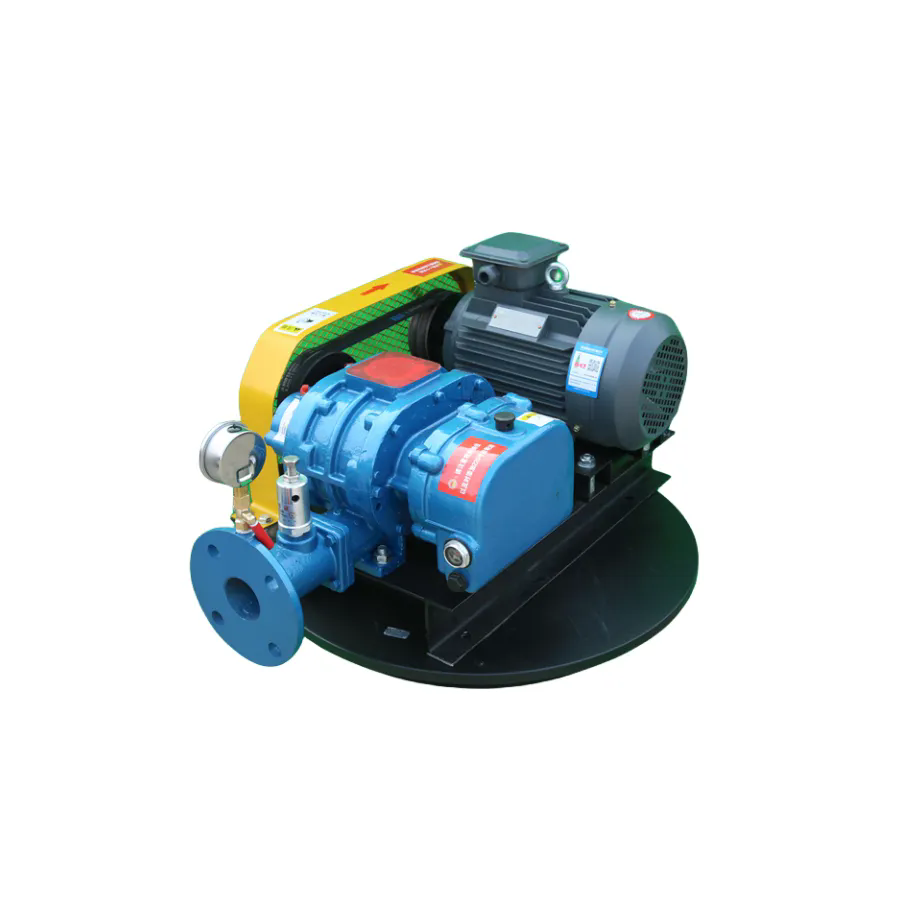What is a Roots Blower and How Does It Benefit Your System?
2024-11-09
In industrial applications, the importance of maintaining efficient airflow and pressure cannot be overstated. Whether it’s for aeration in wastewater treatment plants, pneumatic conveying, or material handling, the right equipment can make all the difference. One such crucial piece of machinery is the Roots blower. But what exactly is a Roots blower, and how does it benefit your system? Let’s dive into its features, working principles, and advantages.
1. What is a Roots Blower?
A Roots blower is a positive displacement blower used to move air or gases at a constant flow rate. It consists of two rotating lobes (also called rotors) that intermesh within a housing to move air from the inlet side to the outlet side of the blower. This type of blower is known for its high efficiency and ability to handle a variety of gas-moving applications.
The design is simple yet effective, relying on the mechanical movement of the rotors to trap air and push it through the system, creating a steady flow of air. The Roots blower is typically powered by an electric motor or internal combustion engine, depending on the application.
2. How Does a Roots Blower Work?
The Roots blower operates based on the principle of positive displacement. As the rotors turn, they trap a fixed volume of air and force it through the blower housing toward the outlet. The lobes of the rotors do not come into contact with each other or the housing, which minimizes friction and wear. This design results in high efficiency and the ability to maintain a consistent air or gas flow, regardless of pressure changes.
Here’s a simplified explanation of how it works:
1. Air Intake: Air enters the blower through an inlet port.
2. Rotor Rotation: The two lobes rotate in opposite directions, trapping the air between them.
3. Air Discharge: As the lobes rotate, the trapped air is pushed out of the blower through the discharge port.
Since the volume of air moved is directly tied to the rotation of the lobes, Roots blowers provide a constant flow, making them ideal for systems that require steady airflow.
3. Applications of Roots Blowers
Roots blowers are used across many industries due to their versatility and reliability. Some common applications include:
- Wastewater Treatment: Roots blowers are often used for aeration in wastewater treatment plants. They supply the necessary oxygen to bacteria that break down waste, helping to purify the water.
- Pneumatic Conveying: In manufacturing and material handling, Roots blowers are used to move bulk materials like powders, pellets, and granules through pipes using air pressure.
- HVAC Systems: Roots blowers are used to improve air circulation in large-scale HVAC systems, particularly in buildings requiring consistent ventilation.
- Industrial Processing: Industries like food and beverage, chemical processing, and pharmaceuticals use Roots blowers to help in processes such as drying, cooling, and mixing.
- Vacuum Systems: Some Roots blowers can be used in vacuum applications, providing a powerful suction force for lifting materials or creating vacuum environments in certain industrial processes.
4. Advantages of Using a Roots Blower
There are several benefits to using a Roots blower in various systems:
- Constant Airflow: Since Roots blowers are positive displacement devices, they provide a consistent flow of air regardless of system pressure fluctuations, which is essential for systems requiring stable air supply.
- High Efficiency: With their simple design and reliable operation, Roots blowers offer high efficiency in moving air or gases without excessive energy consumption. Their minimal wear and tear due to non-contacting lobes also help reduce maintenance costs.
- Ability to Handle Viscous Fluids: Roots blowers are capable of moving not just air but also other gases or even small amounts of liquids in certain configurations. This makes them versatile across a variety of industries.
- Durability: Roots blowers are designed to handle tough conditions, making them highly durable in environments where continuous operation is needed. They can withstand abrasive particles, moisture, and contaminants commonly found in industrial applications.
- Low Maintenance: Because the lobes do not make direct contact with each other or the housing, there is less wear and tear, making Roots blowers relatively low-maintenance compared to other types of blowers.
- Compact and Space-Saving: Roots blowers are compact and can be installed in relatively small spaces, making them an ideal choice for facilities with space constraints.
5. Disadvantages and Considerations
While Roots blowers offer many advantages, there are some considerations to keep in mind:
- Noise Levels: Roots blowers can be noisy, especially when operating at high speeds or under heavy loads. Noise reduction measures may be necessary for certain environments.
- Energy Consumption: Although they are energy-efficient, Roots blowers can still consume considerable power, particularly when running at high capacities. It's essential to match the blower's size to the system requirements to avoid unnecessary energy waste.
- Heat Generation: Roots blowers generate heat during operation, which can affect the efficiency of the system. Proper ventilation or cooling mechanisms should be considered to prevent overheating.
6. Choosing the Right Roots Blower
When selecting a Roots blower for your application, consider factors such as:
- Flow Rate Requirements: Determine the volume of air or gas that needs to be moved to ensure you choose a blower with the appropriate capacity.
- Pressure Requirements: Make sure the blower is capable of handling the pressure your system requires, whether it’s low, medium, or high-pressure applications.
- Energy Efficiency: Look for blowers that provide the best balance of performance and energy consumption to minimize operational costs.
- Durability: Choose blowers that can withstand the conditions of your particular environment, especially if you need to move abrasive materials or work in high-temperature settings.
7. Conclusion
A Roots blower is a versatile and reliable piece of equipment used across various industries to maintain steady airflow and pressure. Whether for wastewater treatment, material handling, or industrial processing, the Roots blower’s simple design, efficiency, and durability make it a go-to solution for many systems. However, it’s essential to consider your specific application and ensure the blower is properly sized and maintained for optimal performance. By understanding how a Roots blower works and its benefits, you can make an informed decision about how it can enhance your operations and contribute to long-term success.



